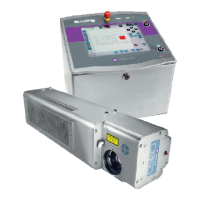Pre-Installation Installation Training
A70622-D1
87/192
Substrate influence
The substrate has a strong influence on the marking quality, but also marking performance
(maximum speed and throughput)
Laser marking process is different from Ink-jet printing process. Markem-Imaje inks have been
developed to adhere on most of all the material. The ink-jet printer produces ink dots at the
fastest speed possible according to a required quality, and the adhesion process is done
outside of the printing time. This is the properties of inks which define the performance of the
marking.
With a laser, the marking quality is very dependent on the time spent to mark. This is why we
speak of marking process at the opposite of printing. If the material is difficult to mark, then
the laser should be activated more or less longer to get the expected result, having a strong
impact on the speed coding performance.
We usually classify easy and hard material categories for laser coding. See some examples in
the table below.
Very difficult substrates
PE, HDPE without additive or pearlescent processing
Epoxy
Ceramic
Difficult substrates
White cardboard
PP
Rubber
Wood
Borosilicate glass
Easy substrates
Inked paper/cardboard
PVC
PET
Standard glass
PE/PP with suitable additives
Triplex structure film : PE/Pre-printed aluminium/PE

